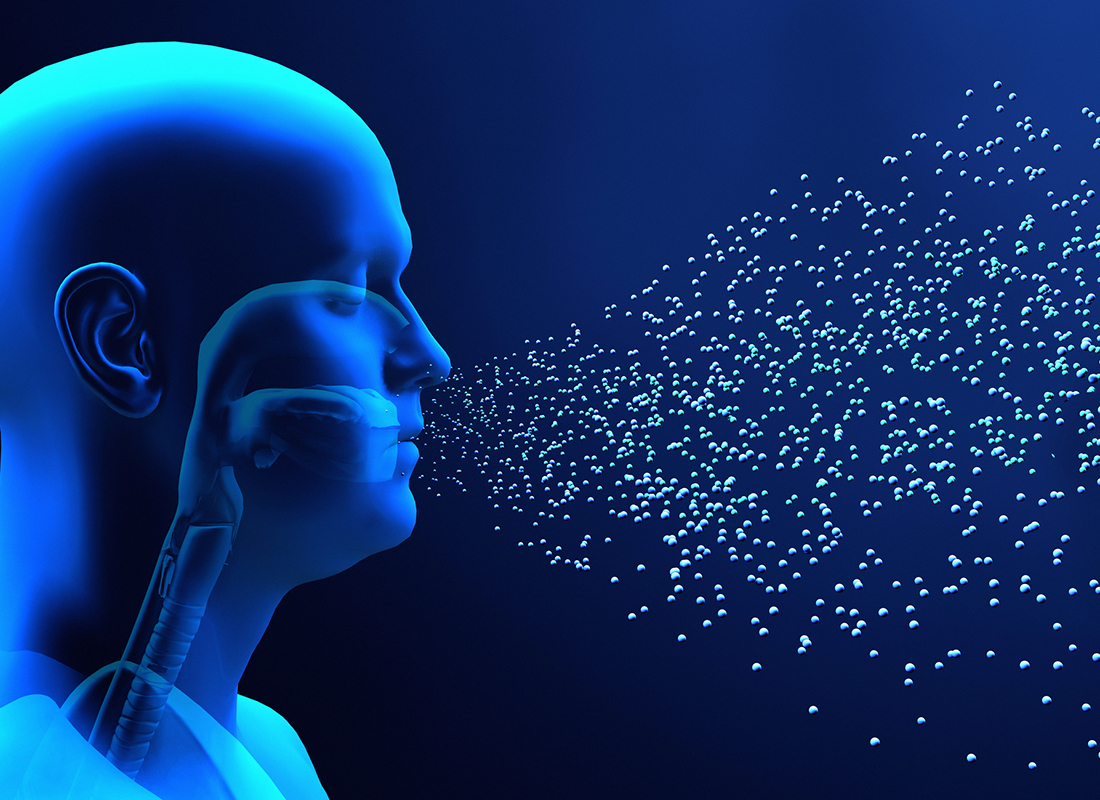Expert Q&A: The Latest in Breath Biopsy
Owlstone Medical CEO Billy Boyle discusses the latest developments in breath biopsy and issues related to its wider clinical adoption.

Though some breath tests are now available and routinely used in the clinic, they have still not been widely adopted in either the research or clinical space, due to a number of challenges. However, breath testing offers several advantages over traditional sampling methods. Billy Boyle, CEO of Owlstone Medical, a leading company in the breath biopsy field, discusses recent developments in the industry, as well as challenges that must be surpassed to achieve wider adoption of this sampling method.

Q: What are some of the latest trends in breath biopsy?
A: One of the latest trends in breath research is to utilize a similar approach as H. pylori or hydrogen and methane breath tests (HMBTs) using a specific test substrate and measuring the changes in the composition of breath over time in response. These test substrates introduce compounds into the body that are not normally found in exhaled breath at significant levels to explore how the compound is absorbed, metabolized, and excreted. Known as an exogenous volatile organic compound (EVOC) probe, this approach can reveal disrupted physiological processes that underpin different diseases. EVOC probes are exciting because we can probe specific pathways of interest and amplify the signal from these pathways for better test performance. This method has been used successfully with the EVOC probe limonene, which can provide a read-out of liver function for the early diagnosis of liver disease via a breath test. EVOC probes are a successful principle that can be utilized in breath research across a range of contexts.
Q: What are the key applications of breath biopsy?
A: Breath is a particularly promising sampling medium for numerous applications in many disease contexts. On the applications side, breath analysis is ideal for screening and the early detection of conditions in the general population, as breath can be collected completely noninvasively and comfortably. These factors are key to the success of screening programs. On the disease side, breath is particularly promising for the diagnosis, monitoring, and therapy selection of respiratory conditions due to its close association with the respiratory system. This includes lung cancer, where an EVOC probe approach can be used to amplify signals specifically associated with tumor development.
Many compounds in the breath originate from the microbiome, of which the highest concentration of microbes in the body is in the gut. We know that the gut microbiome plays a crucial role in our health, and so one of the most promising new avenues of breath research is to identify potential breath biomarkers for the numerous microbiome-associated drivers of health and disease status.
Q: What advantages does breath biopsy offer over other testing/sampling methods?
A: There are many unique advantages of breath. The most beneficial to patients, clinicians, and clinical scientists is that it is noninvasively acquired. Not only does this encourage a high uptake of breath tests in the clinic, but there is also no risk to the patient, as there is with tissue biopsies or even blood tests. Breath is also continually produced from the body as a waste product, so, unlike fecal samples, a significant amount of breath can be collected frequently over a long period of time. This lays the groundwork for the possibility of real-time longitudinal monitoring of the physiological processes ongoing in the body over time. Frequent breath sampling can be used in combination with an EVOC probe approach to assess the changes in breath in response to a substance and use this information to build a stronger view of how the body’s various systems are functioning.
Breath analysis can also be used as a complementary sampling medium alongside others in a multiomic approach to create a broader picture of the physiological processes in the body, as all techniques come with their own unique limitations, and a combined approach can provide richer information that may be useful for clinical interpretation.
Q: Where is breath biopsy in terms of actual clinical use? What will need to happen for it to be adopted more widely?
A: Certain breath tests are currently available on the market, like HMBTs for the diagnosis and monitoring of gastrointestinal conditions, including small intestinal bacterial overgrowth (SIBO). For more breath tests to be used in the clinic, more breath compounds need to be validated as biomarkers of different physiological processes. There is a significant amount of evidence that links different breath compounds to disease, but not much mechanistic work that demonstrates what the actual link is, to guide how measuring the breath compounds could be used in the clinic. The exception to this is breath compounds that originate from the microbiome, as there have been many foundational studies linking certain volatile metabolites to their microbial origin. Crucially, more breath biomarkers need to be developed and validated, and we need more scientists and clinicians willing to collect that data during clinical studies to map out the differences in breath composition in response to disease processes. Breath researchers should also jump on the potential that breath has to add to microbiome studies and make that connection between the two fields.
Q: What do labs need to consider when adding breath biopsy to their workflows?
A: Breath is underutilized in clinical studies and can be used as a complementary medium alongside blood, fecal matter, and urine during multiomic studies. It has historically been difficult to collect breath samples and so has often been undertaken in a non-standardized fashion. This has led to problems when generalizing the results to other breath research studies, with sometimes contradictory results. These issues slow down the field’s progress and push the aim of more breath tests utilized as part of clinical practice further into the future. More labs need to make sure they are collecting breath in a robust manner, including study designs that pair breath samples with “blank” ambient air samples (as controls) to be confident they are analyzing compounds that are truly found in the breath (or “on-breath”), rather than those that have been inhaled from the environment. This issue needs strong procedures to minimize variability, as environmental air can change in different sampling locations and over time, weakening the power a study may have to make experimental inferences.
Q: What developments in breath biopsy are you most excited about and why?
A: One of the biggest challenges in breath research is standardization—making sure that results between studies can be repeated by other similar studies. However, this isn’t just a challenge of breath collection hardware, it is also a challenge when it comes to confidently assigning the identities of compounds found in the breath. There has been a strong push in the field to generate high-quality reference libraries that can be used to robustly identify the same compounds across different studies. The high-confidence identification of candidate biomarkers can enable more targeted study designs to maximize the chances of downstream biomarker validation, and translation into breath tests for clinical use.
Q: Was there anything you wanted to add that my above questions missed?
A: Breath is very underutilized as a sampling medium for biomedical research and, although it has its own challenges, the enormous potential that it holds for clinical studies and clinical practice makes it a worthy pursuit. The more researchers utilize breath as part of their studies, the faster breath testing technology will advance into clinics, where it can transform how we screen, diagnose, and monitor diseases—and ultimately—save lives.
________________________________________________________________________________________________________________________________________
Billy Boyle, M.Eng, is CEO and co-founder of Owlstone Medical, the global leader in Breath Biopsy® for applications in early disease detection and precision medicine. After graduating from the University of Cambridge, Billy founded Owlstone Medical in 2004, securing initial funding.
Billy received The Royal Academy of Engineering Silver Medal and was a winner of the 2018 MacRobert Award; he was then made a Fellow of the Royal Academy of Engineering in 2020 and an MBE in 2021. He was elected an Industrial Fellow at Trinity Hall Cambridge and Entrepreneur in Residence (EIR) at King’s College Cambridge in 2022.
Subscribe to Clinical Diagnostics Insider to view
Start a Free Trial for immediate access to this article